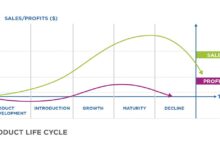Sales on Clothes: 7 Shocking Truths You Need to Know Now
Ever walked into a store, saw a flashy ‘50% OFF’ sign, and instantly felt the urge to buy? You’re not alone. Sales on clothes have become a powerful force in shaping how we shop, what we wear, and even how we feel about ourselves. But behind those tempting discounts lies a complex world of strategy, psychology, and timing.
Sales on Clothes: The Psychology Behind the Discount

Why do we feel such a rush when we see a sale? It’s not just about saving money—it’s about the emotional high of ‘winning’ a deal. Retailers have mastered the art of triggering our psychological triggers to make us feel like we’re getting more value than we actually are. This isn’t accidental; it’s carefully engineered.
The Scarcity Effect and Fear of Missing Out (FOMO)
One of the most powerful tools in a retailer’s arsenal is the scarcity effect. When a sign says ‘Limited Stock!’ or ‘Sale Ends Tonight!’, your brain jumps into action. You start thinking, ‘If I don’t buy now, I’ll miss out.’ This fear of missing out—commonly known as FOMO—drives impulsive decisions, especially during seasonal sales on clothes.
- Limited-time offers create urgency.
- Low stock alerts increase perceived value.
- Flash sales exploit decision fatigue.
According to a study published in the Journal of Economic Psychology, consumers are 30% more likely to purchase during time-limited promotions, even if they don’t need the item.
The Anchoring Bias in Pricing
Have you ever noticed how a shirt is marked ‘Was $99, Now $49’? That original price is often an anchor—a reference point that makes the discounted price seem like a steal. In reality, many retailers inflate the ‘original’ price just before a sale to make the discount appear larger than it is.
‘The higher the anchor, the greater the perceived savings—even if the final price is still high,’ says behavioral economist Dan Ariely in his book Predictably Irrational.
This tactic is widely used in both physical stores and online platforms like ASOS and Zara, where ‘sales on clothes’ are often framed as rare opportunities, even though they occur multiple times a year.
The Evolution of Sales on Clothes Over the Decades
Sales on clothes weren’t always the constant phenomenon they are today. In the mid-20th century, discounts were rare and typically occurred only after major holidays or at the end of a season. But as consumer culture evolved, so did the frequency and scale of clothing sales.
From Seasonal Clearance to Year-Round Promotions
In the 1970s and 80s, end-of-season clearance sales were the norm. Retailers needed to clear out inventory to make room for new collections. Fast forward to the 2000s, and the rise of fast fashion brands like H&M and Forever 21 turned sales into a strategic tool. Now, sales on clothes happen almost every month—Black Friday, Cyber Monday, Back-to-School, Spring Break, and even ‘Random Tuesday Deals.’
- 1970s: Biannual clearance events.
- 1990s: Introduction of holiday-specific sales.
- 2000s: Proliferation of fast fashion and constant promotions.
The shift was accelerated by e-commerce. Online retailers can run digital-only sales without the overhead of physical stores, making it easier to offer discounts more frequently.
The Role of E-Commerce in Normalizing Discounts
With the explosion of online shopping, consumers now expect discounts. A Statista report from 2023 found that 68% of online shoppers in the U.S. wait for a sale before purchasing clothing. This has forced brands to adapt—either by lowering prices or creating artificial scarcity to maintain profit margins.
Platforms like Amazon, Shein, and Boohoo have normalized deep discounts, often offering sales on clothes at 70% off or more. But this constant discounting has consequences, both for the environment and for brand value.
Types of Sales on Clothes: From Clearance to Flash Deals
Not all sales are created equal. Understanding the different types of sales on clothes can help you make smarter purchasing decisions and avoid falling for marketing traps.
End-of-Season Clearance Sales
These are the most traditional form of sales on clothes. At the end of a season—like winter or summer—retailers mark down items to make room for new inventory. These sales often offer the deepest discounts, sometimes up to 70-80% off.
- Best time to buy winter coats in spring.
- Summer dresses often go on sale in late August.
- High-quality items may be available at a fraction of the cost.
Brands like Nordstrom and Marks & Spencer are known for their reliable end-of-season sales, where you can find premium garments at bargain prices.
Flash Sales and Pop-Up Promotions
Flash sales are short-term, high-impact promotions that last anywhere from a few hours to a couple of days. They’re designed to create urgency and drive immediate traffic. Sites like Gilt and Rue La La built their entire business model around flash sales on clothes.
‘Flash sales are not about clearing inventory—they’re about creating excitement and exclusivity,’ says retail analyst Jane Smith.
These sales often require email sign-ups or app notifications, turning customers into a captive audience. While the discounts can be impressive, the limited time frame often leads to rushed decisions and buyer’s remorse.
Membership and Loyalty-Based Sales
Many brands now offer exclusive sales on clothes to loyalty program members. For example, Sephora’s Beauty Insider program or Nike’s membership give early access to sales, special discounts, and free shipping.
- Early access to Black Friday deals.
- Double reward points during member-only events.
- Free gifts with purchase for loyal customers.
These programs not only increase customer retention but also collect valuable data on shopping habits, which brands use to personalize future offers.
How Brands Strategically Plan Sales on Clothes
Sales on clothes are rarely spontaneous. Behind the scenes, brands use sophisticated forecasting, inventory management, and marketing strategies to maximize profit while maintaining brand image.
Inventory Management and Overstock Reduction
One of the primary reasons for sales on clothes is to reduce overstock. When a brand produces more than it sells, those unsold items become a financial burden. Instead of letting them gather dust, retailers discount them to recover some of the production costs.
For example, a brand might produce 10,000 units of a particular dress based on forecasted demand. If only 6,000 sell at full price, the remaining 4,000 will likely go on sale. This is common in fast fashion, where trends change rapidly and overproduction is rampant.
- Overproduction leads to excess inventory.
- Sales help recover manufacturing and storage costs.
- Unsold items may eventually be donated or destroyed.
A Guardian investigation revealed that some fast fashion brands burn unsold clothing to maintain exclusivity, a practice that has sparked global outrage.
Pricing Algorithms and Dynamic Discounting
Modern retailers use AI-powered pricing algorithms to adjust discounts in real time. These systems analyze demand, competitor pricing, inventory levels, and even weather forecasts to determine the optimal discount for each item.
For instance, if a heatwave is predicted, a retailer might delay discounts on swimwear, knowing demand will spike. Conversely, if a style isn’t selling, the algorithm might automatically reduce the price by 10% to stimulate interest.
‘Dynamic pricing turns sales on clothes into a science, not a guesswork,’ says tech analyst Mark Chen.
Companies like RetailNext provide these tools to major brands, allowing them to optimize revenue while minimizing waste.
Brand Image and the Risk of Over-Discounting
While sales boost short-term revenue, they can damage a brand’s long-term image. If a luxury brand like Burberry or Gucci is constantly on sale, consumers may begin to question its exclusivity and quality.
- Perceived value decreases with frequent discounts.
- Luxury brands limit sales to maintain prestige.
- Mass-market brands rely on sales to drive volume.
This is why high-end designers often sell unsold inventory through outlet stores or third-party platforms like The Outnet, keeping their mainline stores free from deep discounts.
The Global Impact of Sales on Clothes
Sales on clothes aren’t just a retail tactic—they have far-reaching effects on the global economy, environment, and labor practices.
Environmental Consequences of Fast Fashion Sales
The constant cycle of production, discounting, and disposal has made the fashion industry one of the most polluting in the world. According to the United Nations Environment Programme, the fashion industry is responsible for 10% of global carbon emissions and 20% of wastewater.
When sales on clothes encourage overconsumption, the environmental cost skyrockets. Cheap, trendy items bought during a sale are often worn only a few times before being discarded.
- Textile waste fills landfills at an alarming rate.
- Synthetic fabrics release microplastics when washed.
- Water and energy are wasted in production.
‘Every time you buy something just because it’s on sale, ask yourself: Will I wear this at least 30 times?’ — Elizabeth L. Cline, author of The Conscious Closet.
Labor Exploitation in Discount-Driven Production
To offer deep discounts, many brands cut costs elsewhere—often in labor. Garment workers in countries like Bangladesh, Vietnam, and Cambodia frequently work in unsafe conditions for wages far below a living wage.
A 2022 report by the Clean Clothes Campaign found that less than 2% of garment workers globally earn a living wage. The pressure to produce cheap clothing for sales on clothes directly contributes to this exploitation.
- Low prices for consumers mean low pay for workers.
- Deadlines for seasonal sales increase workplace stress.
- Lack of transparency in supply chains hides abuse.
Brands like Patagonia and People Tree are working to change this by offering fair trade-certified clothing, but they remain the exception rather than the rule.
Economic Influence on Consumer Spending Habits
Sales on clothes don’t just affect individual budgets—they influence national economies. In the U.S., consumer spending accounts for nearly 70% of GDP, and retail is a major driver.
Events like Black Friday and Cyber Monday generate billions in revenue. In 2023, U.S. shoppers spent over $9 billion on Cyber Monday alone, much of it on discounted clothing. While this boosts short-term economic activity, it can also lead to over-indebtedness and unsustainable consumption patterns.
- Sales stimulate short-term economic growth.
- Impulse buying leads to credit card debt.
- Post-sale returns strain logistics and increase waste.
The cycle of buy-sell-return has become so common that some retailers now charge restocking fees for returned items.
How to Shop Smart During Sales on Clothes
Sales on clothes can be a great opportunity to save money—if you approach them strategically. With a little planning, you can avoid impulse buys and make purchases that truly add value to your wardrobe.
Create a Wardrobe Wishlist
Before any sale begins, make a list of items you actually need. Are you running out of t-shirts? Do you need a new winter coat? A clear wishlist helps you focus on essentials rather than being swayed by flashy discounts.
- Identify wardrobe gaps.
- Prioritize quality over quantity.
- Set a budget for each category.
Apps like Stylebook or Whering allow you to catalog your current clothes and plan future purchases, making it easier to avoid duplicates.
Research Prices and Compare Value
Just because something is on sale doesn’t mean it’s a good deal. Use price-tracking tools like Honey or CamelCamelCamel to see the historical pricing of an item. You might discover that the ‘sale’ price is actually the regular price.
‘The best sale is the one where you buy what you need at a fair price—not just because it’s discounted,’ says financial expert Ramit Sethi.
Also, consider the cost per wear: a $200 coat worn 100 times costs $2 per wear, while a $50 coat worn 5 times costs $10 per wear.
Avoid Impulse Buying Traps
Retailers use clever tactics to trigger impulse buys: free shipping thresholds, ‘Only 3 Left!’ warnings, and bundled deals. To resist, set a rule: wait 24 hours before purchasing anything non-essential.
- Use a shopping cart timer.
- Unsubscribe from promotional emails.
- Shop with a list and stick to it.
Studies show that a 24-hour cooling-off period reduces regretful purchases by up to 40%.
The Future of Sales on Clothes: Trends to Watch
As consumer awareness grows and technology evolves, the landscape of sales on clothes is changing. The future will likely see a shift toward sustainability, personalization, and transparency.
Rise of Sustainable and Ethical Sales
More consumers are demanding ethical fashion. Brands are responding by offering ‘eco-sales’ where a portion of proceeds goes to environmental causes or by using recycled materials in discounted lines.
For example, People Tree runs seasonal sales on clothes made from organic cotton and fair-trade practices. Similarly, Reformation’s ‘Final Sale’ section promotes sustainable shopping by reducing waste.
- Transparency in sourcing and labor.
- Discounts on overstock to prevent waste.
- Partnerships with environmental NGOs.
This trend is expected to grow as younger generations prioritize values over price.
Personalized Discounts Through AI
AI is making sales on clothes more personalized than ever. Instead of blanket discounts, brands will offer tailored promotions based on your browsing history, past purchases, and style preferences.
For instance, if you frequently buy black jeans, you might receive a targeted offer for a new pair at 20% off—while someone else gets a discount on floral dresses. This increases conversion rates while reducing unnecessary discounting.
‘The future of sales is not mass promotions, but micro-targeted offers,’ predicts retail futurist Amy Williams.
Companies like Salesforce Commerce Cloud are already enabling this level of personalization.
Virtual and Augmented Reality Shopping Experiences
Imagine trying on a jacket in your living room using AR, or attending a virtual pop-up sale in the metaverse. These technologies are becoming a reality, offering immersive shopping experiences that blend entertainment with commerce.
Brands like Gucci and Balenciaga have already launched virtual stores where users can buy digital clothing or preview physical items in 3D. As VR adoption grows, ‘sales on clothes’ may increasingly take place in digital spaces.
- Virtual fitting rooms reduce return rates.
- Metaverse events create buzz and exclusivity.
- AR filters let you ‘try before you buy’ online.
This shift could reduce physical waste and make shopping more interactive and engaging.
What is the best time to shop for sales on clothes?
The best times to shop for sales on clothes are typically at the end of seasons (January for winter items, July for summer clothes), during major holidays like Black Friday and Cyber Monday, and during brand-specific loyalty events. These periods offer the deepest discounts and widest selection.
Are sales on clothes always a good deal?
Not necessarily. While sales can offer great value, they can also be misleading. Some retailers inflate original prices to make discounts seem larger. Always research the item’s typical price and assess whether you truly need it before buying.
How do sales on clothes affect the environment?
Constant sales encourage overconsumption, leading to increased production, waste, and pollution. Fast fashion brands, in particular, contribute to environmental degradation through excessive resource use and textile waste. Choosing sustainable brands and buying less can help reduce this impact.
Can I return items bought during a sale?
Most retailers allow returns on sale items, but policies vary. Some stores offer shorter return windows for discounted items or exclude final sale products from returns. Always check the return policy before purchasing.
Why do luxury brands rarely have sales?
Luxury brands avoid frequent sales to maintain their image of exclusivity and high value. Instead of discounting through main channels, they may sell excess inventory through outlet stores or third-party platforms to protect their brand prestige.
From the psychology of pricing to the global impact of fast fashion, sales on clothes are far more complex than they appear. While they offer opportunities to save money and refresh your wardrobe, they also come with hidden costs—environmental, ethical, and financial. By understanding how and why these sales work, you can make smarter, more intentional choices. The future of fashion sales is shifting toward personalization, sustainability, and transparency, offering hope for a more responsible retail landscape. The next time you see a ‘50% OFF’ sign, pause and ask: Is this a deal I need, or just one I want?
Further Reading:


